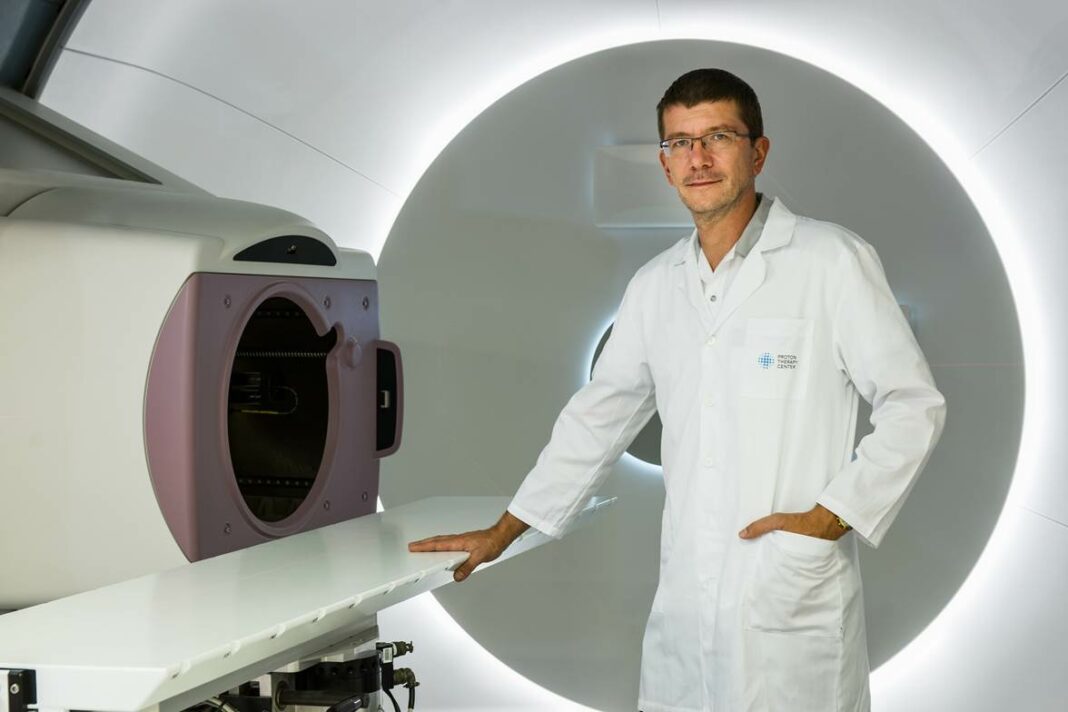Experts have warned that if you see a male relative or friend wince when they sit down, it could be a sign of prostate cancer.
The disease is the most common cancer for men in the UK and affects around one in eight during their lifetime.
Figures show there are 55,000 diagnoses in Britain every year – that’s around 150 every day, according to the charity Prostate Cancer UK.
Detecting issues as early as possible can go a long way to ensuring positive outcomes and one expert has revealed a lesser known sign that could be key to acting before it’s too late.
Leading oncologist Dr Jiri Kubes said: “Experiencing pain while sitting down may seem like a minor discomfort, but in some cases it could be an early warning sign of prostate cancer.
“There are other factors that can contribute to this type of pain – including muscle strain, haemorrhoids or infections – but if you suffer with persistent discomfort in this region of your body it should not be ignored.”
The prostate is a walnut-sized gland located below the bladder, which plays a crucial role in male reproductive health by producing seminal fluid.
Prostate cancer develops when abnormal cells grow uncontrollably in the gland, although there are often no noticeable symptoms in the early stages.
But Dr Kubes added: “As it progresses it can lead to various signs, including pain while sitting.
“Pain in the perineal region – the area between the scrotum and rectum – often results from inflammation of the prostate due to cancerous growths. In some cases, prostate tumours can even press against surrounding tissues.”
Other symptoms to watch out for include a more frequent need to pee, pain when passing water, and blood or semen in your urine.
Some experience a weaker flow in the toilet or the feeling they still need to go when finished. Pain in the lower back and erectile dysfunction can also be red flags.
Dr Kubes, medical director at the Proton Therapy Center in Prague, which treats hundreds of patients for prostate cancer, said: “As with any change in your body, you should keep a close eye on it and seek advice from your GP as soon as possible.
“In some cases there will be nothing to worry about, but it is vital to consult with an expert if you have any doubts whatsoever.”
Treatment options for the disease include radiotherapy, hormonal therapy and surgery, also known as a radical prostatectomy where the entire prostate is removed.
An increasingly popular alternative is proton therapy, where a ‘pencil beam’ of positively-charged particles – travelling at 100,000mph – targets the area with pin-point accuracy.
It is said to have a better chance of shrinking the tumour and unlike traditional radiotherapy, which passes X-rays all the way through the body, proton beam therapy particles stop at the tumour, therefore reducing collateral damage and secondary cancers.
Dr Kubes said: “The advantages of proton beam therapy include a reduced risk of erectile dysfunction – with 94 per cent of men reporting they remain sexually active – plus shorter recovery times.
“The risk of incontinence following proton therapy treatment is one per cent, compared to 15 per cent of patients after surgery and five per cent following conventional radiation therapy.”



